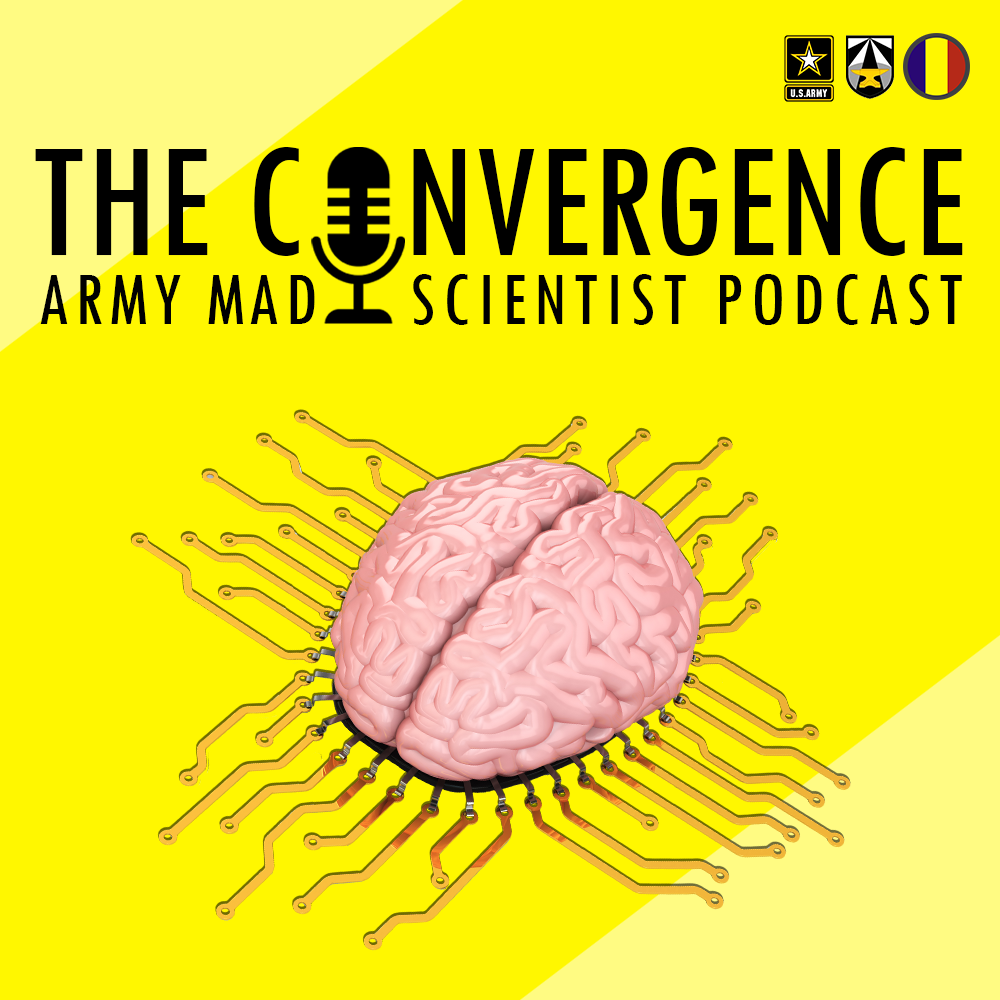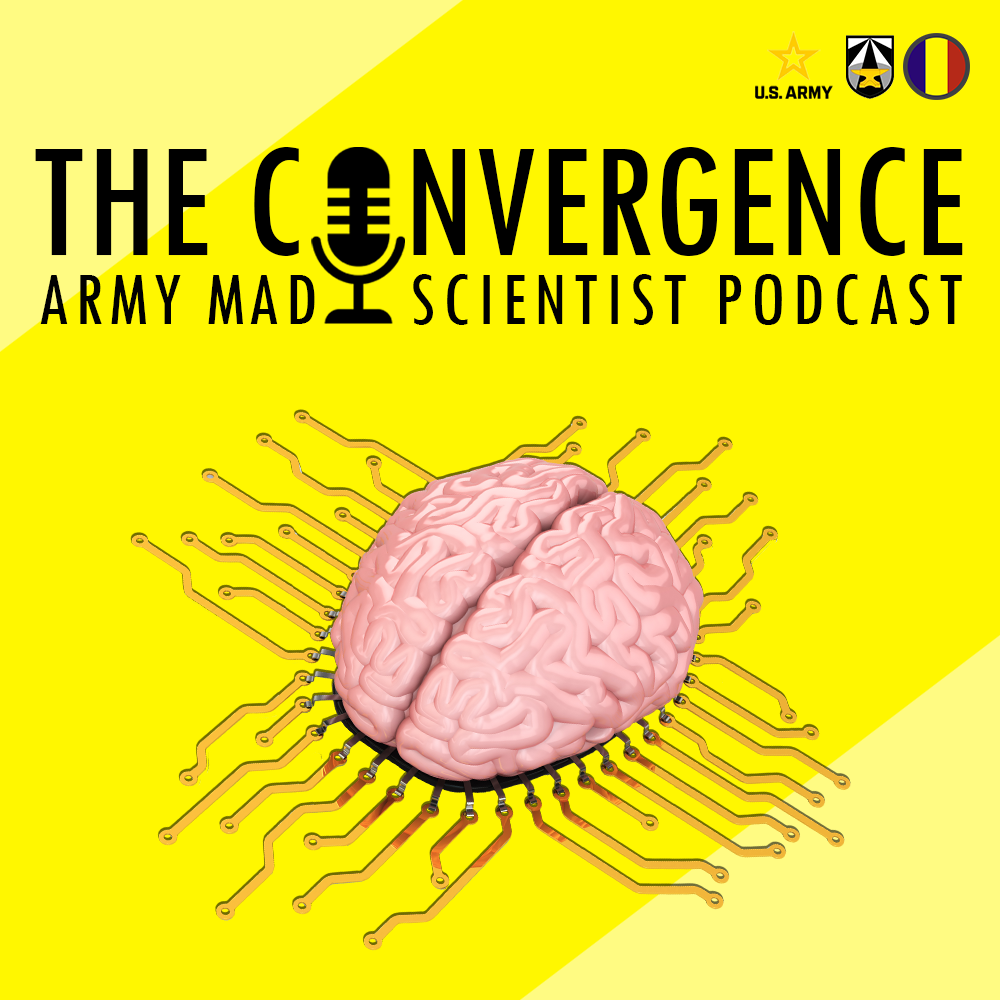[Editor’s Note: Army Mad Scientist is pleased to publish its 500th post! Since its inception on 09 November 2017, the Mad Scientist Laboratory has continuously sought to explore the Operational Environment (OE) and the changing character of warfare on behalf of the U.S. Army. Given this enduring mission, it’s fitting that this milestone post features the highlights from our latest episode of The Convergence podcast. Army Mad Scientist sat down with Mr. Ian Sullivan, Deputy Chief of Staff Intelligence (DCSINT) G-2, U.S. Army Training and Doctrine Command (TRADOC), to discuss the TRADOC G-2’s newly published The Operational Environment 2024-2034: Large-Scale Combat Operations.
The OE underpins how the U.S. Army is organized, trained, equipped, and operates — it is foundational in ensuring the Army’s mission success — fighting and winning our Nation’s wars. This latest OE assessment focuses on how our adversaries are learning and adapting how they fight from recent and on-going conflicts around the globe (e.g., Nagorno-Karabakh, Ukraine, Gaza, and the Gulf of Aden). It describes the twelve conditions that contribute to Large-Scale Combat Operations (LSCO) and five resulting implications for the U.S. Army.
This new OE assessment is central to how the U.S. Army integrates the threat within our Leadership Development Training and Education system, our doctrine, and our modernization efforts across the DOTMLPF-P spectrum of capabilities. In preparing for LSCO against our pacing and acute threats (China and Russia, respectively), it represents the “gold standard” for which the Army must ready itself as a “precursor to victory.” Any and everyone associated with defending this great Nation should familiarize themselves with its contents — Read on!]
Mr. Ian Sullivan is the Deputy Chief of Staff Intelligence, G-2, TRADOC. He holds a BA from Canisius University in Buffalo, New York, an MA from Georgetown University’s BMW Center for German and European Studies in Washington, D.C., and was a Fulbright Fellow at the Universität Potsdam in Potsdam, Germany. A career civilian intelligence officer, Mr. Sullivan has served with the Office of Naval Intelligence; Headquarters, U.S. Army Europe and Seventh Army; the Office of the Director of National Intelligence (ODNI) at the National Counterterrorism Center; the Central Intelligence Agency; and TRADOC. He is a member of the Defense Intelligence Senior Executive Service and was first promoted to the senior civilian ranks in 2013 as a member of the ODNI’s Senior National Intelligence Service. Mr. Sullivan is a frequent and valued contributor to both the Mad Scientist Laboratory and The Convergence podcast.
In our latest episode of The Convergence podcast, Army Mad Scientist sat down with Mr. Sullivan to discuss the newly released The Operational Environment 2024-2034: Large-Scale Combat Operations, the twelve conditions that contribute to LSCO, and the five implications for the U.S. Army and the larger Joint Force. The following bullet points highlight the key takeaways from our conversation:
Stay tuned to the Mad Scientist Laboratory for our next episode of The Convergence on 22 August 2024, when we sit down with “Wolfgang Hagarty” (a nom-de-guerre) to discuss the on-going war in Ukraine, the rapidly evolving Unmanned Aerial Systems (UAS)/Counter-UAS fight, and the overarching impacts of technological innovation on the changing character of warfare.
If you enjoyed this post and podcast, check out The Operational Environment 2024-2034: Large-Scale Combat Operations.
Explore the TRADOC G-2‘s Operational Environment Enterprise web page, brimming with information on the OE and how our adversaries fight, including:
Our China Landing Zone, full of information regarding our pacing challenge, including ATP 7-100.3, Chinese Tactics, BiteSize China weekly topics, People’s Liberation Army Ground Forces Quick Reference Guide, and our thirty-plus snapshots captured to date addressing what China is learning about the Operational Environment from Russia’s war against Ukraine (note that a DoD Common Access Card [CAC] is required to access this last link).
Our Russia Landing Zone, including the BiteSize Russia weekly topics. If you have a CAC, you’ll be especially interested in reviewing our weekly RUS-UKR Conflict Running Estimates and associated Narratives, capturing what we learned about the contemporary Russian way of war in Ukraine over the past two years and the ramifications for U.S. Army modernization across DOTMLPF-P.
Our Running Estimates SharePoint site (also requires a CAC to access), containing our monthly OE Running Estimates, associated Narratives, and the 2QFY24 and 3QFY24 OE Assessment TRADOC Intelligence Posts (TIPs).
Review the following related Mad Scientist Laboratory content:
Know Your Enemy: Army Doctrine Starts with the Threat and associated podcast, with General Gary M. Brito, Colonel Rich Creed (USA-Ret.), and Mr. Ian Sullivan
Insights from Ukraine on the Operational Environment and the Changing Character of Warfare
Learning from LSCO: Applying Lessons to Irregular Conflict, by Ian Sullivan and Kate Kilgore
Insights from the Israel-Hamas War and associated podcast, with LTC Kenneth Hardy
Unmanned Capabilities in Today’s Battlespace
Revolutionizing 21st Century Warfighting: UAVs and C-UAS
War Laid Bare, by Matthew Ader
The Operational Environment’s Increased Lethality
The Hard Part of Fighting a War: Contested Logistics
Future Dynamics of Warfare: Everyone is a Player, Everything is a Target, by Team Sullivan’s Travels
Dense Urban Environments (DUE): Now through 2050
China and Russia: Achieving Decision Dominance and Information Advantage by Ian Sullivan
WMD Threat: Now and in the Future
Innovation at the Edge and associated podcast

This is a special off-schedule episode of The Convergence where we talk with a mystery guest, possibly for the last time!

To Boldy Go, edited by COL Jonathan Klug and Steven Leonard, and published by Casemate Publishers in 2021, is subtitled “Leadership, Strategy, and Conflict...

[Editor’s Note: Grizzled readers of the Mad Scientist Laboratory will recall their well-thumbed copies of the forty-year-old FM 100-2 series, The Soviet Army. U.S....